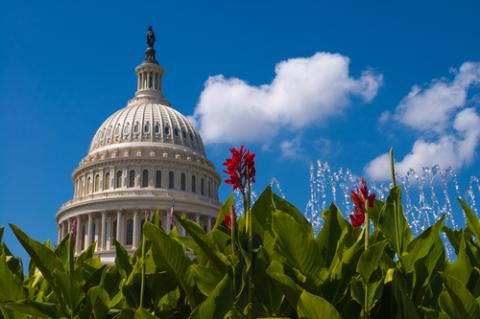What will the Infrastructure Act mean for State Environmental Policies
By: Jane Marsh
Upon entering office, President Joe Biden established a national carbon neutrality goal. He plans on achieving his objective by enhancing the sustainability of America’s infrastructure. The Build Back Better plan supports these alterations, providing $2 trillion to clean development companies and organizations.
Biden’s plan influenced the Infrastructure Investment and Job Act’s formation, creating greater employment and technological advancement opportunities. The Act supports the creation of a green electric grid and additional renewable energy projects. Congress’s support of the development improves atmospheric conditions and air quality, enhancing human and environmental health.
States With Ambitious Environmental Policies
As eco-consciousness rises, various states set ambitious environmental policies. Last April, Virginia made history by establishing the first 100% renewable energy goal in the south. Converting the state’s electricity reliance away from fossil fuels towards clean energy is costly and labor-intensive.
When COVID-19 swept through the U.S., taking individuals’ jobs and safety, Virginia ran into sustainability challenges. Government officials halted renewable energy production projects, reallocating funding to medical support. The Biden administration evaluated the issue and generated a solution to improve health conditions and the employment rate.
The Infrastructure Investment and Jobs Act allocated billions of dollars to the sustainability sector, creating low-emission-related jobs. It supports individuals who lost their jobs during the pandemic and improved environmental conservation efforts. States also have access to federal government funding to enhance their climate change mitigation programs.
California and Oregon developed low-carbon fuel standards, decreasing transportation emissions. They require fuel companies to lower their emissions by diversifying their energy sources. Some providers utilize biofuels, reducing their greenhouse gas emissions and supporting modern lifestyles.
They also use carbon credit trading, regulating the transportation sector’s degradation of the natural environment. The Infrastructure Investment and Jobs Act helps states decrease their air pollution production while improving employment rates. States can successfully initiate ambitious environmental regulations when accessing government funding.
Transportation
The transportation sector is one of the largest pollution generators in the U.S. Inefficient or nonexistent public transit infrastructure promotes individual vehicle use, producing preventable emissions. The Act offers $89.9 billion to public transportation development programs.
Los Angeles has high sustainability standards and creates a significant quantity of transit pollution. The state experiences adverse environmental and human health impacts deriving from the urban heat island effect. After Biden established the Build Back Better plan, California developed a new agreement.
The new legislation supports a renewable energy bus fleet, accessing 47.5 million gallons of clean fuel. Enhancing the public transportation sector’s sustainability and accessibility also advances the aims of the Green New Deal. And the development significantly decreases greenhouse gas emissions and improves economic equality.
Agriculture
The agricultural sector experienced various benefits from the Act. Infrastructural enhancements will deliver high-speed internet to rural communities. It also improves agricultural professionals’ access to power and abundant clean water sources.
The inefficient use of water by farmers and irrigation systems is depleting aquifers in Florida. If the state fails to take action, they may decrease their average yield sizes and degrade local access to food. Fortunately, the new legislation supports sustainable water use, enhancing the sustainability of systems.
Florida plans on utilizing the funding to create conservation-focused agricultural development. Improving water distribution and preservation using wastewater recycling technology can limit stress on the industry. They are also using floating solar panels to limit supply depletion from rising evaporation rates.
Electricity
Part of Biden’s goal is reaching 100% renewable energy by 2035. He increased the residential and commercial sector’s accessibility rates by extending clean power tax incentives. Before Biden took office, the credits were expiring by the end of 2020.
The president extended the Solar Investment Tax Credit through 2024. It remains at 26% until 2023. Then it continuously drops until the expiration date.
Extending the tax credit helped states like New York advance their sustainable energy goals and regulations. The state plans on significantly decreasing emissions by enhancing its use of emission-free sources. Improving financial support also helps New York develop a cleaner electric grid.
Additionally, new energy development projects also increase residential safety. Some states plan on installing additional overhead ground wires, increasing lightning protection. The systems efficiently deliver electricity to residential and commercial structures and prevent adverse human health effects.
Environmental Justice
The Act also increases environmental justice, improving sustainability systems in low-income communities. Throughout history, different regions received inequitable access to ecological and human health protection. States plan on utilizing the funding, improving national preservation regardless of class or status.
New Jersey developed new regulations based on recycling enhancement goals. The state may now deny facility permits in certain regions, limiting disproportionate waste placement. They will develop new processing facilities in low-income communities, increasing the sustainability of the entire state.
National Development
Each state is utilizing Biden’s funding to meet its established climate change prevention efforts. The president also developed national policies and ambitions to help steer energy sourcing in a greener direction. With time and commitment, the future will be more sustainable for all.
Author Jane works as an environmental and energy writer. She is also the founder and editor-in-chief of Environment.co.




